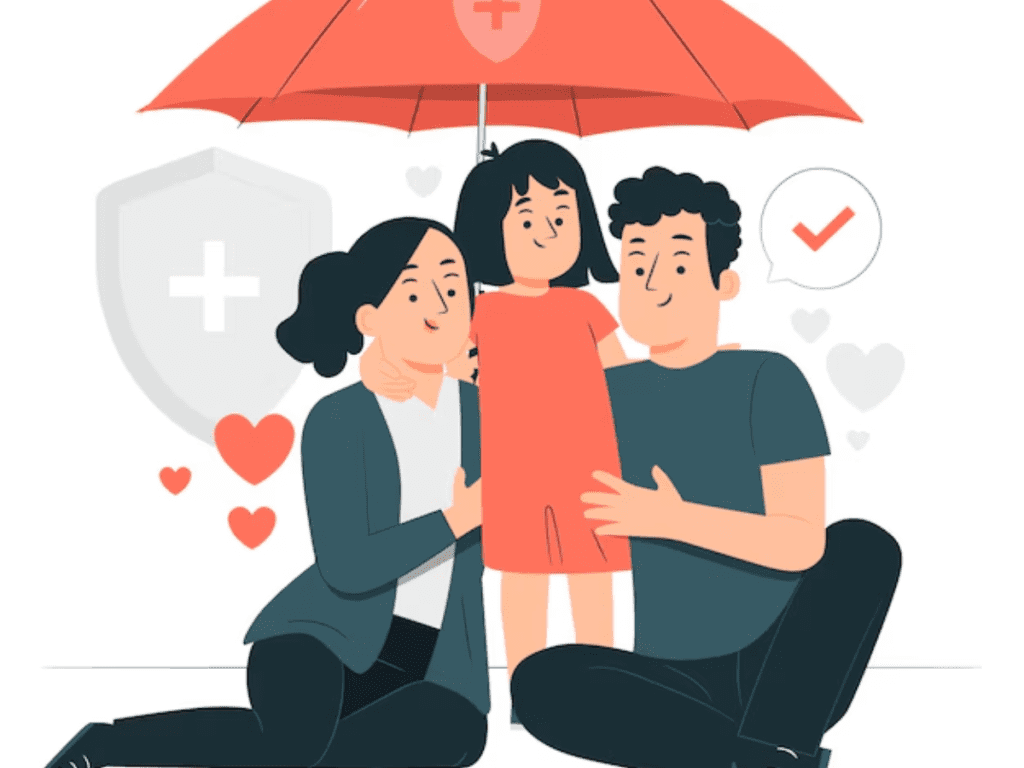Introduction
Life insurance is a vital financial resource that safeguards your loved ones in the unfortunate event of your death. Several employers provide life insurance as a benefit of being an employee, making it an appealing and accessible option for employees. This protection is often offered at minimal or no cost, providing some financial safety. While employer-provided life insurance has benefits, however, it is not always adequate to suit a person’s own requirements. The decision to use employer-offered life insurance or buy an individual plan is significant. Knowledge of the advantages and disadvantages will assist employees in determining whether their level of protection is sufficient or if they must top it up with an individual plan.
This article explores the benefits and drawbacks of buying life insurance through an employer, the differences between group and individual policies, and strategies for ensuring adequate financial protection for your family.
What Is Employer-Sponsored Life Insurance
Group life insurance, or employer-sponsored life insurance, is an insurance policy that employers offer to their employees. The coverage is usually part of the employee benefits package and is intended to provide financial protection to the worker’s family in the event of an untimely death.
Employers typically cover the minimum level of coverage, which could be a multiple or an amount of money. Sometimes employees have the choice to buy more coverage at a group rate, which could be less than if they had an individual policy.
Although employer-sponsored life insurance is a convenient and cost-effective option, it should be understood that there are some limitations and determine if one needs to purchase additional coverage.
Benefits of Purchasing Life Insurance Through Your Employer
Low or No Cost Coverage
Perhaps the greatest advantage of employer-provided life insurance is that it is free or low-cost. Many employers include the basic life insurance policy as a benefit of their employment package, so employees are not required to pay for the coverage themselves.
Since employers usually pay for the premiums, this form of insurance offers employees a low-cost means of having some form of financial protection without incurring added costs.
No Medical Examination Necessary
In contrast to private individual life insurance policies that usually involve a medical exam or complete health screening, an employer-sponsored group life insurance usually does not involve rigorous medical requirements. Workers are generally qualified for coverage regardless of how they are doing health-wise, making it a great choice for those whose pre-existing health conditions might make private insurance coverage problematic or costly.
Simple Enrollment and Automatic Coverage
Enrollment in employer-sponsored life insurance is quite simple. Numerous employers automatically cover new employees with a standard plan the moment they are hired by the company. In situations where employees must choose to enroll, the enrollment process is also quite simple and does not require much paperwork.
Premiums are usually paid from the employee’s salary, and it is easy to maintain and ensure a flow of coverage continuously. This ease obviates employees from searching for policies, comparing prices, or dealing with complicated application procedures.
Option to Purchase Additional Coverage at Lower Rates
Some employers make it available for employees to purchase supplemental life insurance at a reduced rate. Because group rates are often lower than individual rates, this can be an economical means to acquire more coverage.
For workers who require more coverage than the standard employer-offered policy offers, purchasing more coverage through the plan of the employer could be a cheaper alternative to the purchase of an individual policy.
Immediate Coverage Without Waiting Periods
In contrast to individual life insurance policies that can take weeks or even months to be approved, employer-sponsored life insurance is usually immediate. Employees are covered immediately upon enrolling in the plan to provide financial protection for their dependents without waiting periods.
Disadvantages of Buying Life Insurance Through Your Employer
Limited Coverage Amount
One of the largest disadvantages of employer-offered life insurance is that the amount of coverage is usually too low. The majority of employer-offered policies provide coverage equivalent to one or two years of the employee’s income. Though this might be adequate, it is advisable, according to financial advisors, to have life insurance coverage of a minimum of ten to fifteen times your yearly earnings to provide a sufficient amount of protection for your loved ones.
If a worker has dependents, outstanding debt, or long-term financial obligations, basic coverage offered by an employer will be insufficient to provide for the needs of his/her family upon their death.
Coverage Ends When You Leave the Job
Employee-sponsored life insurance is attached to your job. When you quit your job, whether by resignation, firing, or retirement, you can lose your coverage. This implies that if you do not have an independent life insurance policy, you might find yourself without protection.
Individuals can sometimes have the option to take an individual policy, but this might be costly and include more premiums. Those who tend to change jobs often or are soon to retire should think about having an individual policy that can travel with them no matter what their job situation is.
Lack of Personalization and Control
As the employer-sponsored life insurance is a group policy, it is not individualized according to personal needs. The workers have little influence over the terms of the policy, the insurer, or the amount of insurance.
With a personal life insurance policy, the policyholders can tailor their coverage according to their financial aspirations, dependents’ requirements, and future ambitions. But in the case of an employer-offered plan, employees have to agree to the terms and conditions defined by their company.
Possible Diminution in Coverage with Age
Some life insurance policies through employers decrease benefits when workers become older. For instance, workers could get full coverage until a given age, after which the benefit level decreases. This is disadvantageous to mature employees because they require steady coverage.
Lack of Portability
Because employer-sponsored life insurance is connected with the employee’s job, no assurance exists that coverage will remain if the firm modifies its benefits package or if the worker changes employers. Total dependence on a plan sponsored by an employer can be hazardous if the employee encounters a spell of unemployment.
Employer-Sponsored Life Insurance Versus Individual Life Insurance
Employer-sponsored life insurance and individual life insurance both have pros and cons.
Employer-sponsored life insurance is generally low-cost or free, does not involve medical exams, and offers immediate coverage. But it has restricted coverage amounts, is not portable, and lacks flexibility.
Individual life insurance, in contrast, has more flexibility, offers more coverage, and stays in effect no matter what happens with jobs. It also could involve a medical exam and higher premiums.
Best Strategy: Blending Employer and Individual Life Insurance
Although employer-provided life insurance is a good starting point, it is seldom sufficient in and of itself. The optimal approach is to supplement it with an individual life insurance policy to provide sufficient financial security.
Workers can avail of low-cost or free employer-provided coverage as well as buy an individual policy that suits their long-term financial objectives. This guarantees that protection is not affected by job switching and offers sufficient financial security for dependents.
How to Know Whether Your Employer-Sponsored Life Insurance Is Sufficient
As employer-sponsored life insurance is not without its restrictions, it is crucial to assess whether your employer’s provided coverage is enough for your current financial circumstances. Consider the below points while checking your life insurance needs.
1. Check Your Financial Obligations
Begin by estimating your financial obligations, such as mortgage payments, debts, children’s education costs, and day-to-day living expenses for your dependents. If the group coverage offered by your employer does not suffice to pay for these costs for your family in case of your death, you will require additional coverage.
2. Take into Account the Number of Dependents
The more dependents, the greater the level of financial protection they will require. If you have children below working age, a dependent spouse who relies on your earnings, or elderly parents who need financial help, employer-provided life insurance might not be sufficient to cover their financial requirements.
3. Evaluate Your Savings and Investments
If you have a substantial amount of savings, investments, or other financial assets, you might not require as much life insurance. Nevertheless, if your family depends on your income and you have modest savings, then extra coverage could be needed in order to support their financial situation.
4. Consider Inflation and Future Expenses
When determining your insurance requirements, take into account the effect of inflation on future costs. The price of living, medical care, and tuition will grow with time, so the level of coverage that appears adequate at present might fall short in the future.
5. Plan for End-of-Life Expenses
Funeral expenses, doctor bills, and other final expenses can be substantial. If your employer group life insurance only gives a modest death benefit, your survivors might not be able to pay for these expenses without further coverage.

